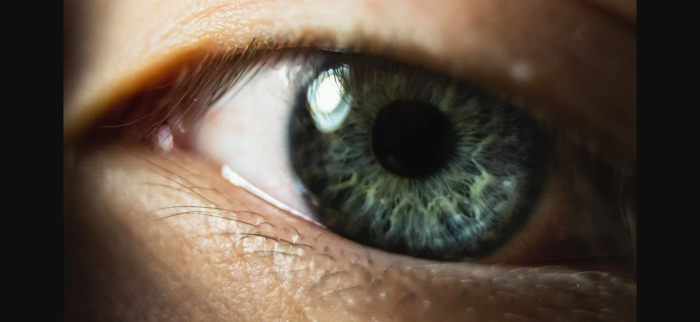In a world where digital screens dominate our lives, and environmental factors continually challenge our eye health, dry eyes have become a common concern. Dry eyes, characterized by itching, burning, redness, and a gritty sensation, can significantly impact our daily lives and overall comfort.
As reported by the Dry Eye Directory, around 16.7 to 50.2 million Americans currently have dry eyes. Fortunately, there are a variety of eye drops designed to alleviate these symptoms and provide relief. However, before reaching for that bottle of eye drops, there are essential factors to consider to ensure effective and safe use.
In this article, we’ll explore a few things you must remember before using eye drops for dry eyes.
Consultation with an Eye Care Professional
According to ChronicDryEye.net, the average cost of managing dry eye disease per person in the US is more than $11,000. The idea that it’s a costly treatment prevents many from seeking professional help in this regard. That’s why most people with dry eyes opt for eye drops directly instead of consulting a professional first.
Over-the-counter eye drops may seem like a quick solution to dry eyes. However, it’s still crucial to consult an eye care professional before starting any new treatment regimen. A comprehensive eye exam can help determine the underlying cause of your dry eyes and guide you toward the most appropriate treatment.
There are a lot of factors that can lead to dry eyes. These include age, medical conditions, medications, existing health issues, and so on. An eye care professional can help you identify the root cause of your dry eyes. In doing so, they can recommend specific treatments that will cater only to your case and needs.
Choosing the Right Ingredients
Always read the label when selecting eye drops. Keep an eye out for ingredients like hyaluronic acid, glycerin, sodium, and potassium. These help retain moisture and soothe your eyes.
Avoid eye drops with vasoconstrictors, as they can lead to a rebound effect, making your eyes even drier once the drops wear off. If you have allergies or sensitivities, make sure to choose drops that are labeled as preservative-free to prevent any adverse reactions.
While you’re on the subject of ingredients, see if you can study the product’s manufacturing details as well. Sometimes, these products often fail to ensure proper manufacturing standards. That, in turn, can cause serious injuries, as was the case with the EzriCare eye drops.
According to TorHoerman Law, usage of the EzriCare Artificial Tears has led to vision loss, permanent vision loss, and eye infections in many. This has led to an EzriCare recall by the FDA.
The EzriCare Artificial Tears lawsuit was also filed concerning these cases. It was found that the manufacturing process of these eyedrops lacked proper measures to ensure product sterility. Now, Global Pharma Healthcare, the manufacturer of the EzriCare eyedrops, will now have to answer to the public for their failure in this regard.
Therefore, choosing the right ingredients and ensuring quality manufacturing is also important before opting for any sort of eye drops.
Understanding the Types of Eye Drops
Not all eye drops are created equal. There are different types of eye drops available, each designed to address specific aspects of dry eyes. The main categories include lubricating drops, preservative-free drops, anti-inflammatory drops, and drops that increase tear production.
Lubricating drops provide immediate relief by moistening the eyes, while preservative-free options are ideal for those with sensitivity to preservatives. Anti-inflammatory drops target inflammation that may be contributing to dry eyes, and tear production-enhancing drops help stimulate the natural production of tears. Understanding the type of eye drops that best suit your condition is vital for effective relief.
Consistency is Key
Like any treatment regimen, consistency is vital when using eye drops for dry eyes. When you consult an eye care professional, they’ll recommend a schedule for taking the drops. Following that schedule will work best for you.
It’s important not to skip doses, even if you start feeling better. Dry eye symptoms can fluctuate, and maintaining a consistent routine will help manage your discomfort effectively. In case of any side effects or worsening symptoms, contact your eye doctor.
Lifestyle Adjustments
While using eye drops can provide significant relief, they are only one part of the equation. Making lifestyle adjustments can complement the effects of eye drops and promote better overall eye health.
Remember to blink regularly, especially when focusing on digital screens, to help spread the tear film and prevent dryness. Adjust the humidity levels in your environment, especially in air-conditioned or heated spaces, to prevent excessive evaporation of tears. Using artificial tears before engaging in activities that may exacerbate dryness, such as reading or prolonged screen time, can also be helpful.
Conclusion
According to Yahoo Finance, the US dominates the global ophthalmic eye drops market. As of 2022, the country holds a global share of 32.6 percent in this market. Given how often people use eye drops to solve eye-related problems, it’s no surprise how this market has grown so big here.
However, as you can tell from the discussion above, one must exercise certain precautions before using these drops. Unless that’s done, these medications might prove to be deadly to your eyes as well as your overall health.





